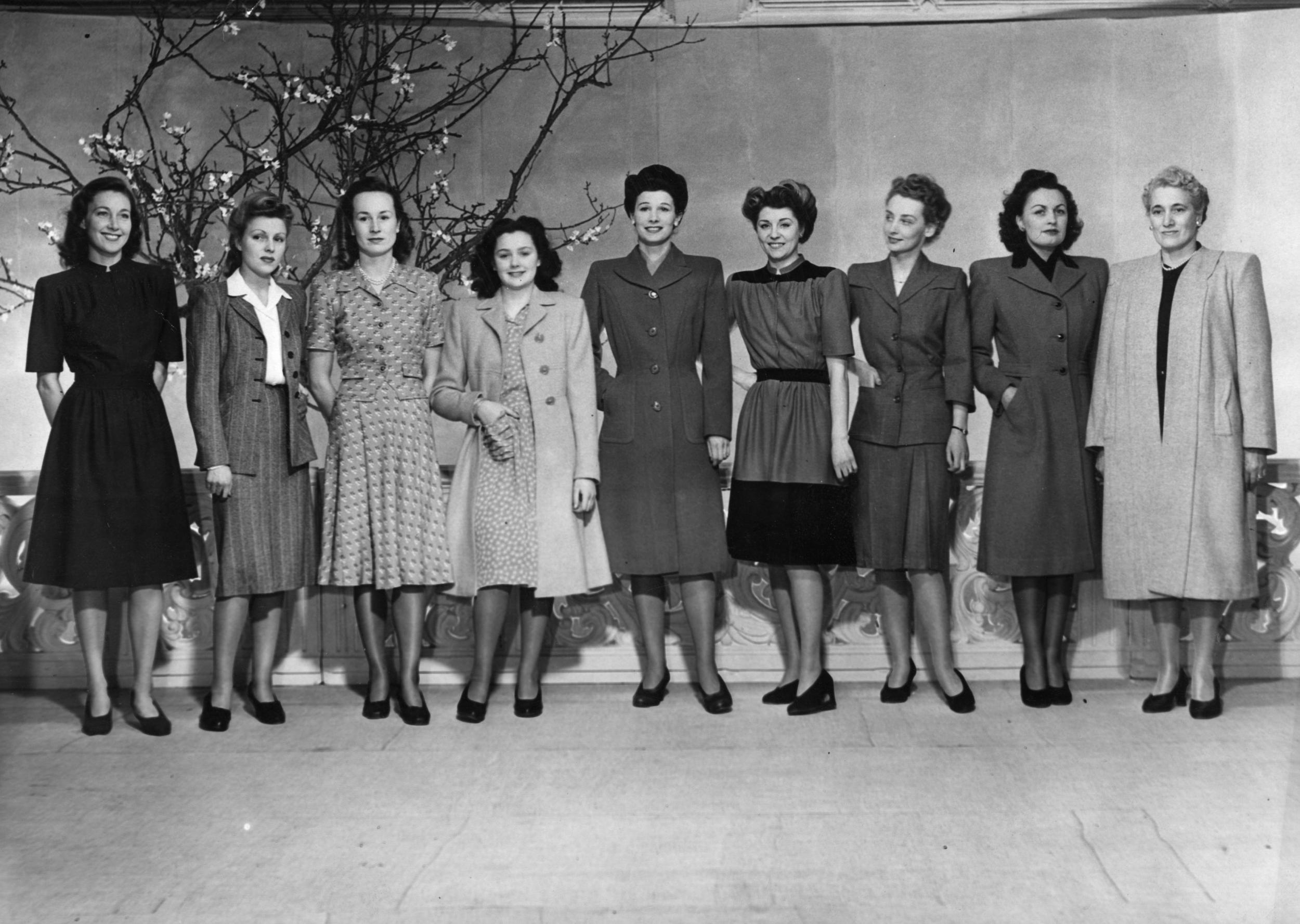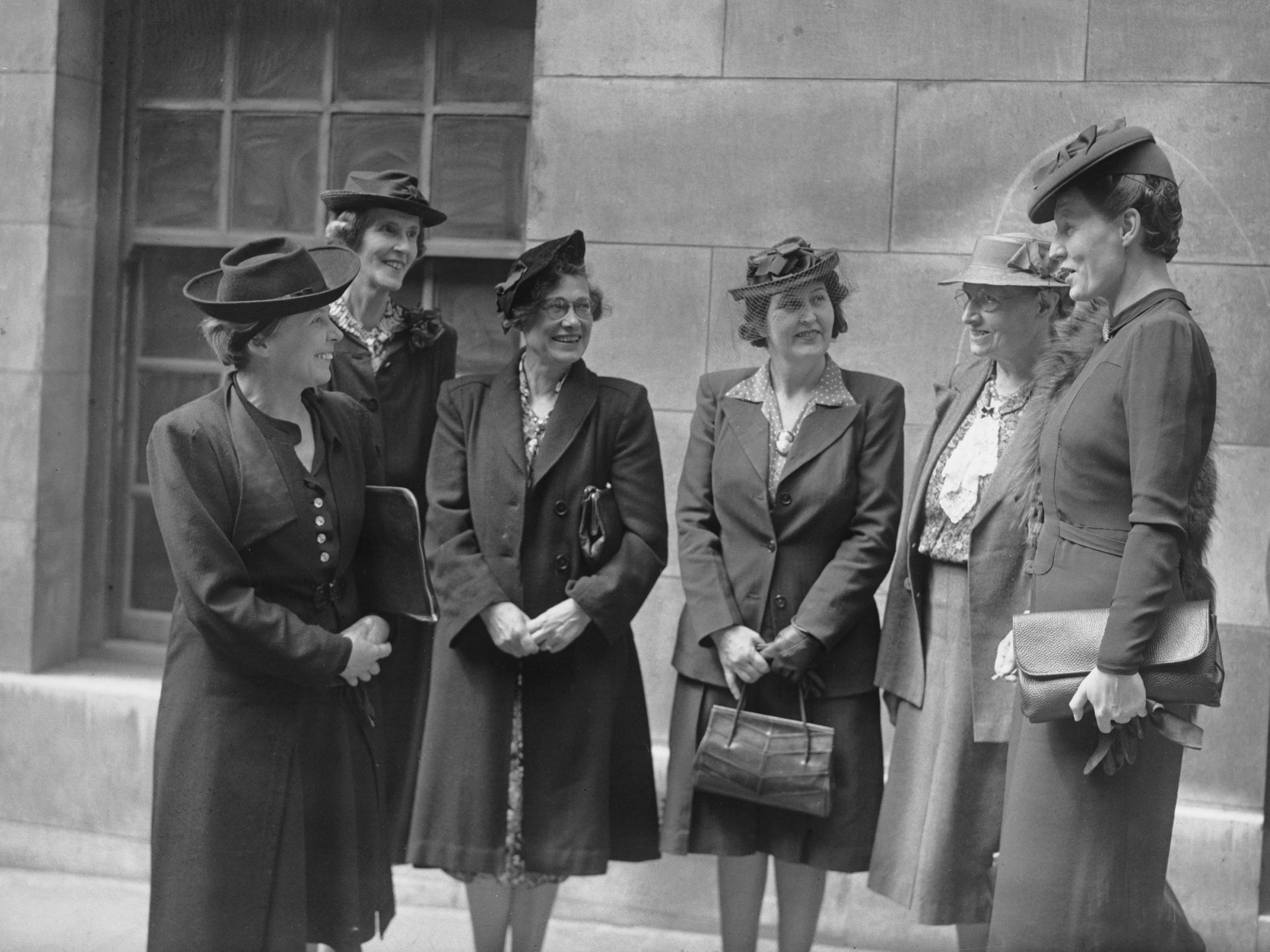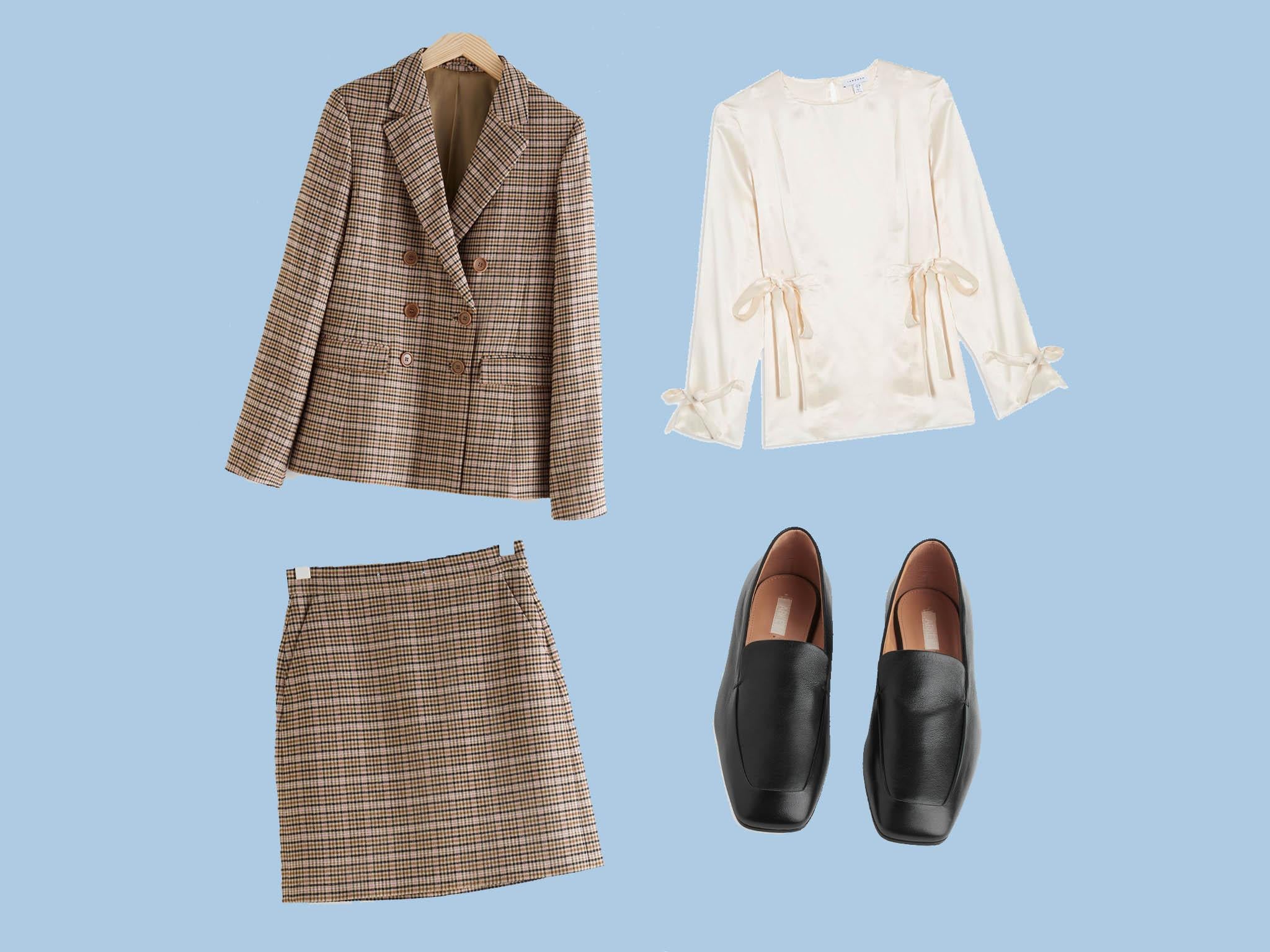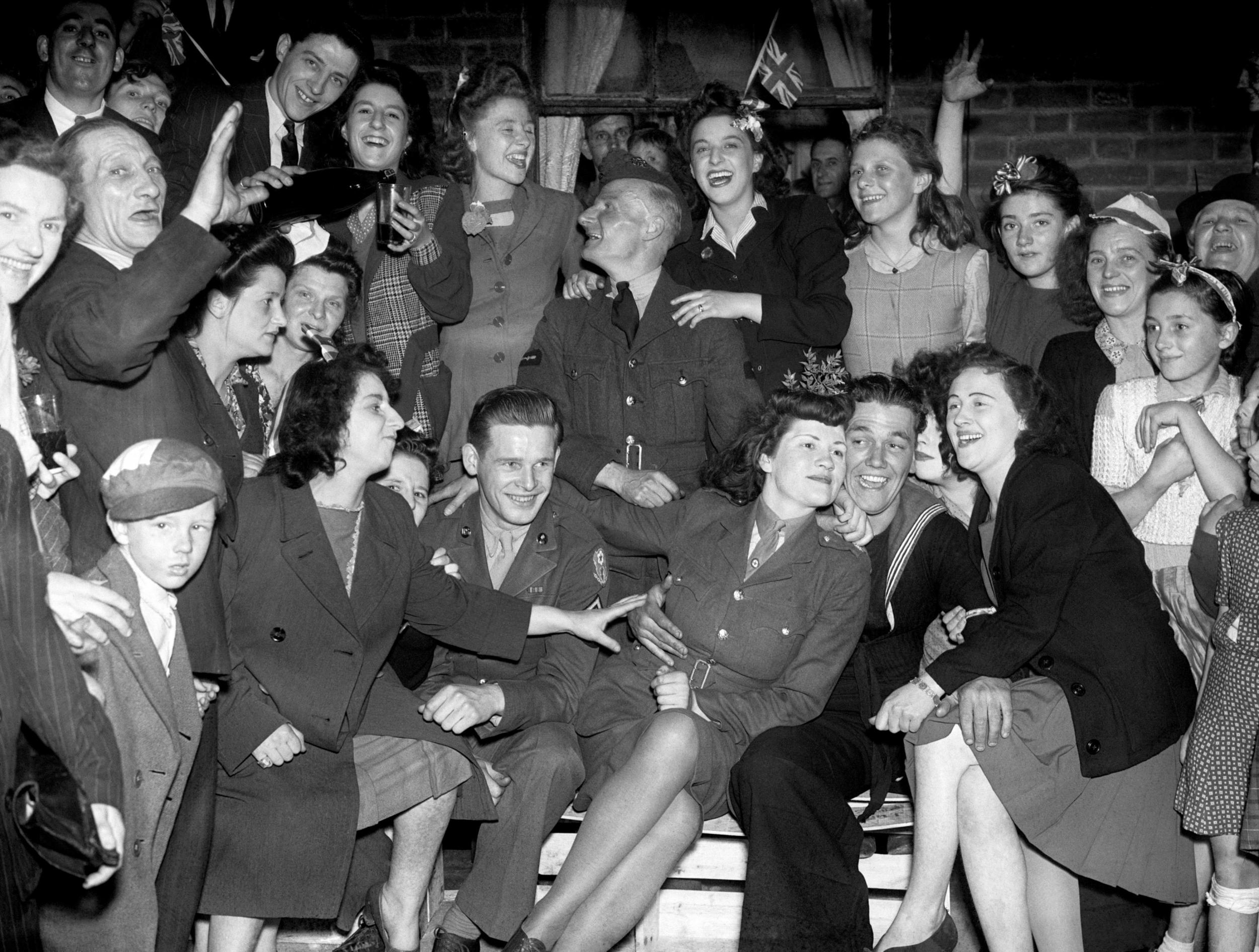The Independent's journalism is supported by our readers. When you purchase through links on our site, we may earn commission.
VE Day: Forties-inspired fashions to celebrate the 75th anniversary in style
Wartime government encouraged women to take an interest in fashion as a way to keep up morale, writes Sarah Young


Your support helps us to tell the story
From reproductive rights to climate change to Big Tech, The Independent is on the ground when the story is developing. Whether it's investigating the financials of Elon Musk's pro-Trump PAC or producing our latest documentary, 'The A Word', which shines a light on the American women fighting for reproductive rights, we know how important it is to parse out the facts from the messaging.
At such a critical moment in US history, we need reporters on the ground. Your donation allows us to keep sending journalists to speak to both sides of the story.
The Independent is trusted by Americans across the entire political spectrum. And unlike many other quality news outlets, we choose not to lock Americans out of our reporting and analysis with paywalls. We believe quality journalism should be available to everyone, paid for by those who can afford it.
Your support makes all the difference.Friday 8 May marks 75 years since VE Day, but with parades and public festivities off the cards due to the coronavirus outbreak, people across the UK are looking for other ways to pay tribute to the Second World War generation.
The current sense of community spirit, as demonstrated each week during Thursday evening’s Clap For Our Carers, has proved that us Brits are nothing but persistent when it comes to sharing a feeling of national pride. All, of course, while following social distancing guidelines.
From decorating your house with flags and bunting to joining in with Dame Vera Lynn’s nationwide singalong, there promises to still be plenty of ways to celebrate. But, for fashion fans especially, dressing to impress is the key to paying homage to life in wartime Britain.
The Second World War might seem like an unlikely time to have a fashion moment, but despite the air raids and rationing, style was not in short supply and was even encouraged by the government as a way to keep up morale on the home front.
While the people of Britain had more pressing concerns, the Imperial War Museum (IWM) states that women were frequently implored not to let standards slip too far over concerns that a lack of interest in personal appearance could be a sign of low morale and have a detrimental impact on the war effort. Yes, that’s right, even the threat of imminent invasion didn’t stop men from policing women’s bodies.
The war had an enormous impact on the fashion industry in Britain, with the production and consumption of civilian clothes rationed from 1941 in order to safeguard raw materials and release workers and factory space for the wartime effort.
But, despite the limitations imposed by rationing, fashion survived and in some cases flourished, albeit in unexpected ways.
Shoppers were forced to consider their purchases more carefully, choosing only to spend their precious clothing coupons on garments that would suit all seasons, while others demonstrated great creativity by recycling old clothes and fabrics for dressmaking.

The government even launched a “make do and mend” campaign to encourage people to make their existing supplies of clothes last longer, with posters and leaflets circulated with advice on how to prevent moth damage, repair shoes and care for different fabrics.
“Wartime life involved hard work, drudgerous housekeeping and a lot of time spent on one’s feet. Comfort and durability were therefore essential when it came to clothing,” says Laura Clouting, senior curator at the IWM.
“Women’s style was defined by robust fabrics, reactive repairing and clothing free of complicated embellishments during the war. The resulting structure and simplicity of women’s fashion is one of the reasons why the 1940s style endures in popularity today.”

Cally Blackman, a senior lecturer in fashion history and theory at Central Saint Martins, agrees adding that rationing directly impacted the shapes and styles of women’s clothing, with slimmer and shorter dresses developed to reduce yardage of fabric.
“Raw materials also cost less coupons than made up clothes, so knitting also became a national obsession: the services were fitted out in appropriately coloured woollen jumpers, gloves and socks, while at home old woollies were unravelled and recycled,” she added.
The concept of quality over quantity and making more informed purchases is something many of today’s consumers are also championing. According to The Waste and Resources Action Programme (WRAP), approximately £140m worth of clothing goes into landfill each year, with experts stating that by 2050 the fashion industry will use up 25 per cent of the world’s carbon budget.
These worrying statistics make VE Day the perfect occasion to rummage through your wardrobe and rediscover items you probably forgot you even owned.
Women during the war were forced to economise, buy fewer clothes and take greater care of their things so that they could last longer, but that did not mean they sacrificed on style. So, while it might be tempting to sit around in that same tracksuit you have been spent most of lockdown wearing, use VE Day as a reason to get up, put on your glad rags and sport that stiff upper lip us Brits have become so famous for.
When it comes to deciding what to wear, look to the most popular styles of the time which, according to Clouting, were bright day dresses and skirt suits that could create a variety of looks by switching between different blouses and accessories.

Alex Longmore, a celebrity stylist who has worked with the likes of Claudia Schiffer and Vogue Williams, says a super easy way to emulate the wartime looks is with a 1940s-style floral-print dress, citing brands such as Anthropologie, Ghost and Boden, should you need to purchase a new one. “I would team it with plimsolls to make the look a bit more current,” she says.
Alternatively, you could opt for a more tailored look which can be easily achieved by pairing your trusty office-appropriate pencil skirt with a matching blazer and silk blouse.
While accessories were simple during the Second World War, they were seen as an easy way to spruce up an outfit and almost always relied on repairing or refurbishing an existing item rather than buying something new.
“Lots of recycling, little hats were fashionable, and scarves were also wrapped around women’s head like turbans. This helped protect their hair while at work but was also a way to brighten up outfits cheaply,” says Dr Rebecca Arnold, senior lecturer in history of dress and textiles at The Courtauld Institute of Art.
The blackouts, which saw everyone cover their windows and doors at night to prevent light aiding enemy aircraft during the bombing raids, also prompted the trend for wearing white and luminous accessories so that women were more visible in the dark, while shoes with platforms, often made using cork heels due to leather shortages, also proved popular.

When it came to handbags, women tended to opt for small structured carryalls, however they became less popular throughout the war as gas masks had to be carried in their place. These were usually issued in a cardboard box with a string threaded through so it could be carried over the shoulder, but some retailers were quick to spot a gap in the market for a more attractive solution and created handbags that contained compartments for a gas mask.
To give your 1940s-inspired look the perfect finishing touch, wear a printed head scarf to tie in your hair or a thick Alice band for a more contemporary take. “Remember giving a nod to the era can almost be more effective than dressing up in full fancy dress,” Longmore says. “It’s more believable and more comfortable for you to wear.”
While the majority of women continued to wear skirts and dresses during the war, trousers did begin to grow in popularity, largely thanks to a garment known as the “siren suit”.

“The ‘siren suit’ was a hit of the Second World War, a practical all-in-one garment that was often seen in air raid shelters,” Clouting says. “It had its most famous fan in the form of Winston Churchill who had a well-known love of the garment.”
Akin to what we now refer to as a jumpsuit or boiler suit, these garments were designed to be pulled on quickly over night clothes if the wearer had to escape to an outdoor air raid shelter. Some women even gave theirs a stylish twist by adding puffed shoulders, bell-bottom cuffs to the legs, a detachable belt and piping decoration.
A similar look was also sported by the women’s land army, which was a vital workforce for the continued production of food in the UK, who were issued with a distinctive uniform of khaki cotton corduroy or wool gabardine breeches, a green pullover, cotton twill dungarees, an overall coat, gumboots and a hat.

The good news is that boiler suits have skyrocketed in popularity in recent years and are now widely regarded as an accessible wardrobe staple available at a number of high street stores, including Topshop, Zara, Arket and Free People. Pair yours with a pair of blank ankle boots and don’t forget to roll up the sleeves on your jumpsuit to show that you are prepared to carry out some hard work.
How to do victory rolls in your hair
The final thing to consider when it comes to completing your wartime look is your hair and make-up.
According to the IWM, make-up and hair styles took on an increased importance during the 1940s, with many women going to great lengths to still feel well-dressed despite wearing last season’s clothes and homemade accessories.
While many of us have been haven’t been doing our hair in recent weeks, VE is a great opportunity to recreate the iconic 1940’s victory rolls.
“During the Second World War, more women than ever were recruited into manual labour – and that meant wearing their hair in practical, safe hairstyles that wouldn’t get caught in machinery or otherwise get in the way,” says Rachael Gibson, a hair historian.
“The victory roll became a trend thanks to its combination of glamour and practicality; hair was worn swept up off the face, with detailed rolls at the front to add an elegant touch that could peek out of a hair net or headscarf.”

But, just how easy are they to recreate at home? According to hair stylist Brooke Evans, the look can be achieved in just five simple steps:
- Section a front panel and back comb the hair from mid-way up the hairs length using strong downward strokes and compressing to the head.
- It may look messy but then with a bristle brush, smooth all the edges to create a more polished feel with the back combed hair remaining in the middle.
- Once in place use your fingers, spray and smooth along the hair, twisting to allow it to fall into a victory roll. Brooke’s top tip: “Allow it to fall the way it wants to – not making it go a certain way will add to the overall look.”
- Use a clip to hold in place and then pull small amounts out to feel more modern and spray in place.
- Finally, remove the clip and add a few discreet grips for extra hold.
As with clothing, women were forced to find creative ways around make-up shortages by using beetroot juice for a splash of lip colour and boot polish for mascara after many cosmetics firms switched their production to items needed for the war effort. Luckily that’s not necessary anymore, and while most of us already have the basics in our beauty arsenal, those looking to purchase something new can rely on places such as Cult Beauty and Space NK to deliver.
But, amid the cutbacks, there was still colour, so swipe on your favourite red lipstick and coat your lashes with a slick of mascara for a finishing touch before venturing to your doorstep to belt out “We’ll Meet Again” on Friday night.
Join our commenting forum
Join thought-provoking conversations, follow other Independent readers and see their replies
Comments